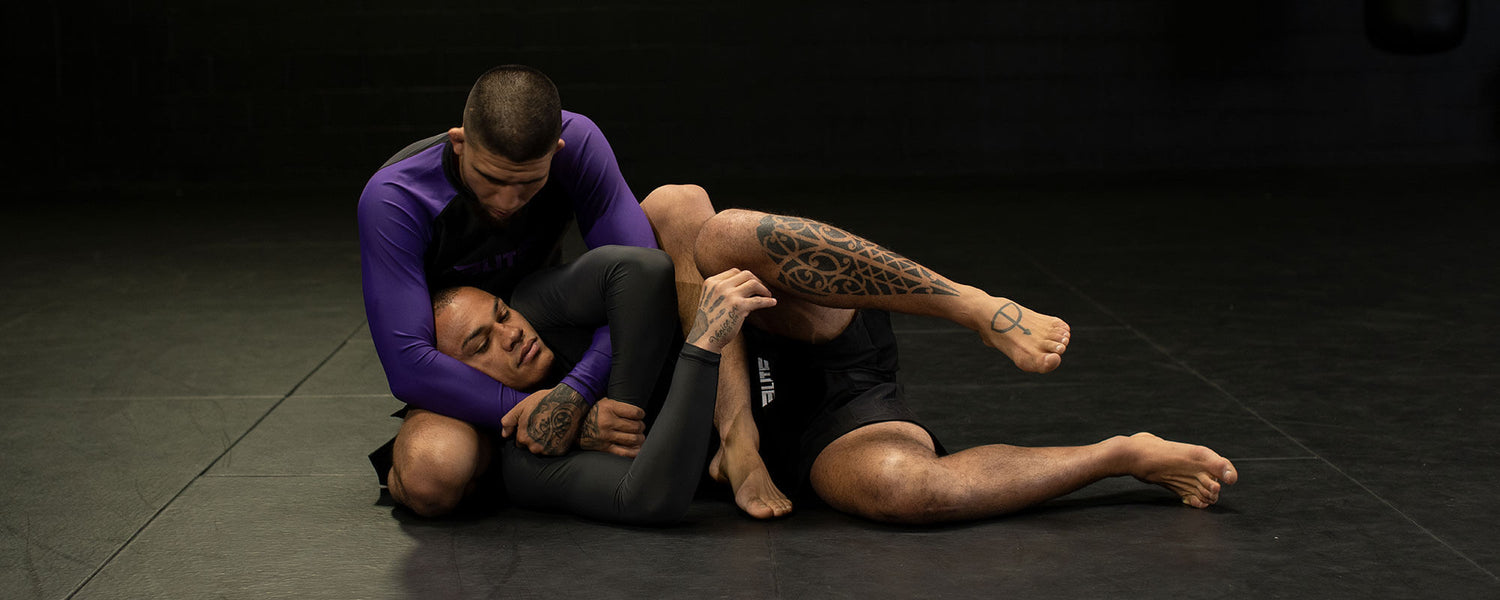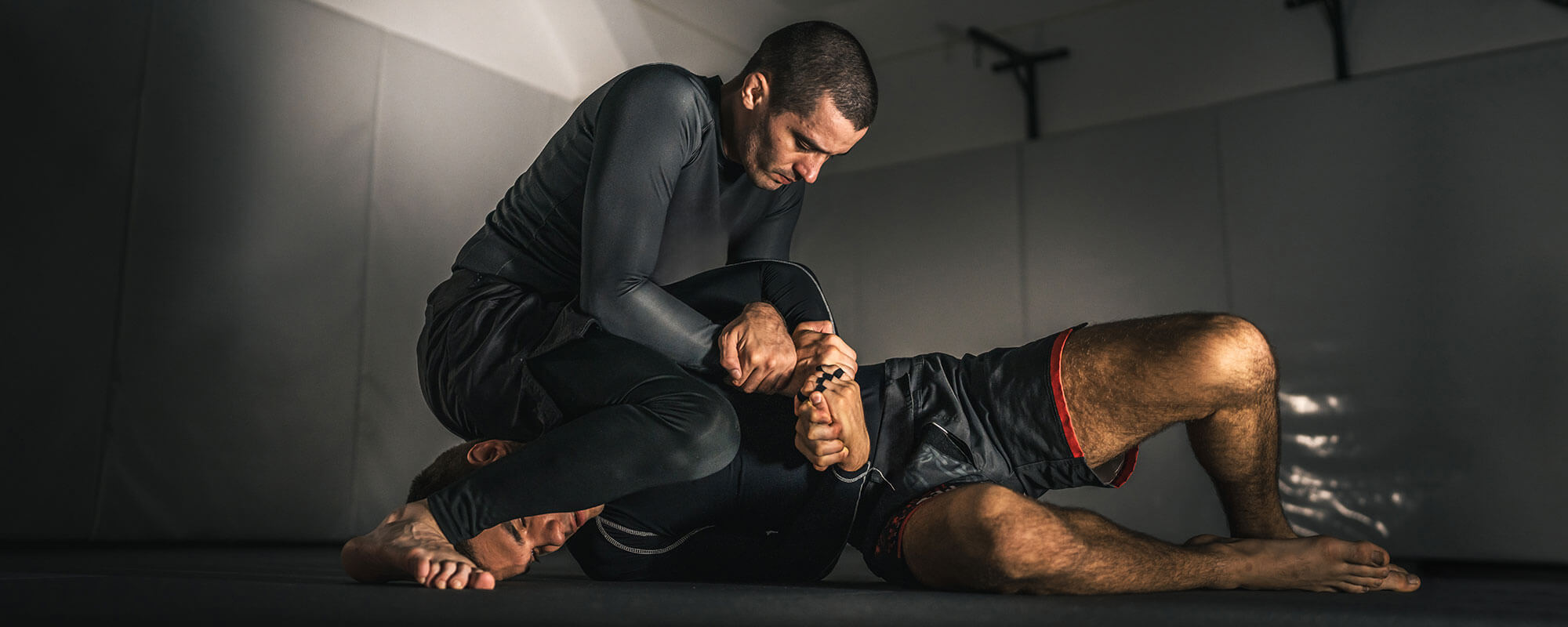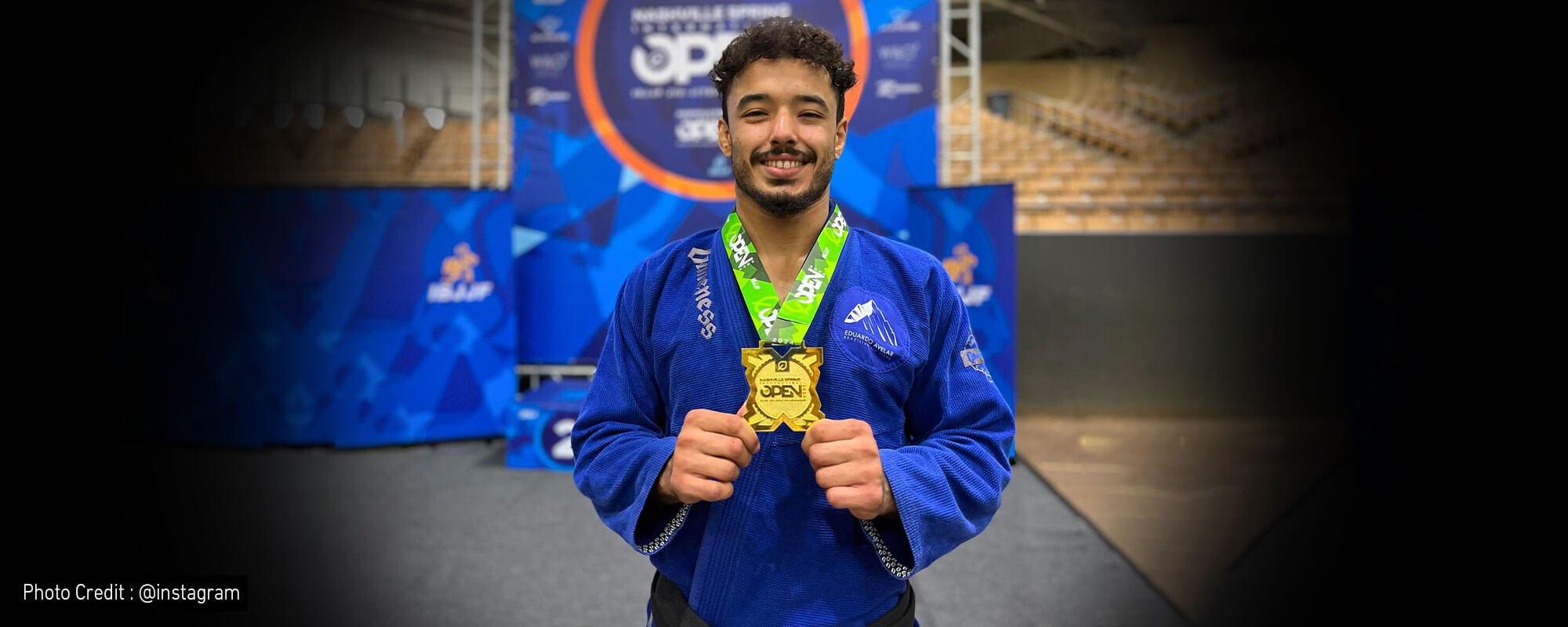The art of Brazilian Jiu-Jitsu (BJJ) is based on grappling techniques, using the perfect angle to employ the submissions and chokes. The fighters work on grabbing the targeted area to implement the joint lock.
Each one is distinct and comes with its specific application. The "Bow and Arrow Choke" is a standout among them. The choking method requires less effort, and the fighter can take maximum control over the opponent.
Before discussing this horrendous choke, let us gain primary knowledge of the choke, bow, and arrow to discuss its various aspects appropriately. This choke is often associated with Brazilian Jiu-Jitsu (BJJ) and is also a prevalent technique of 'twisting' an opponent's head to the extent they tap out.
It is a choke that can be applied in several positions with a high percentage of success. Hence, it is an excellent weapon for any grappling practitioner.
The primary hypothesis of the Bow and Arrow Choke is grabbing the opponent's lapel or collar. The pressure is applied to narrow the throat area of the opponent, thus preventing blood and oxygen from getting to the brain. The choke receives its name from the picture it paints, drawing an imaginary bow with the opponent's arm acting as the arrow.
Table of content
In this article, we will study the anatomy, fundamental variations, and practice of the Bow and Arrow Choke in various situations.
1. What is Meant by Bow and Arrow Choke?
The Bow and Arrow Choke is an effective technique that primarily relies on the basic principles of leverage and body mechanics. A smaller and technically skilled fighter can defeat even a larger opponent. It perfectly represents BJJ as a combat sport that does not employ brute force but instead relies on skill and strategy. Practitioners of this game who appreciate and learn the finer details of this submission can even triumph over tough contests.
The Bow and Arrow Choke is one of the submission techniques employed in Brazilian Jiu-Jitsu (BJJ). It focuses on targeting the opponent's neck using their GI to restrict blood flow to the head and side by side; it also affects breathing. With various grips and precision in the angle, this technique makes a good transition towards a proper choke hold position. Because of that, the bow and arrow choke has gained a lot of recognition.
The following sections will explore the mechanics, performance, variations, training, and practical execution of the Bow and Arrow Choke. Further, we will cover these attacking grips, positions, movements, and defenses. So you can use them in your grappling practice.
Therefore, let us solve the Bow and Arrow Choke puzzle and follow the way to the top.
2. Origin of Bow and Arrow Choke
The Bow and Arrow Choke originates from a relatively distant period in the history of Japanese Jiu-Jitsu. Since the inception of Brazilian Jiu-Jitsu, the bow and arrow choke has developed, and it is now one of the most effective methods in competitions and grappling events.
Bow and Arrow choke is an ancient method that has evolved from the Japanese martial arts. Judo practitioners use it to involve the execution of the ninety-degree angle around the neck of the opponent. Fighters from various marital arts have practiced the bow and arrow choke. It has several styles, having originated from the different methods of execution.
After that, it was modified, and the practitioner included different aspects and grappling styles. This development in training has resulted in numerous techniques concerning the accomplishment of particular grips, approaches, and positions from where the grip might be utilized.
The possibility of such a formation is due to the strength of the arms, principles, and regulation of the opponent's movements. Because of the fighter's body weight and proper orientation, someone may create a lot of force onto the enemy's neck, leading to a firm chokehold.
The historical information surrounding this procedure is satisfying and instrumental in broadening or expanding horizons concerning its use and evolution. We will explain the clinging strategies for controlling keys and the sequence of actions in detail.
3. Mechanism of Bow and Arrow Choke
As the BJJ fighter will execute the Bow and Arrow choke, they need to address the position of the arms first. From back control with a seatbelt grip, where you have a choke arm that goes over the opponent’s shoulder. Get into your opponent’s collar with that arm crossing and thumb inside the collar.
The primary objective is to escape back then control so that your opponent’s shoulder can be taken back to the ground. With the other arm, the fighter needs to hold the near side leg outside the knee of the GI pants.

At this point, one of your legs will be across your opponent’s torso (similar to a technical mount) while one shin is on the floor behind the opponent's shoulder blade. This second leg can go in a few different places; more often than not, it is over the head to assist with the bow and arrow-based choke.
Once the control is taken on the knee and the collar is captured, the fighter needs to tilt the whole body backward to another knee and have the collar stretched to the arms to complete the choke.
This method is closer to the motion of backing up after pulling a string of a bow in shooting, which is how the choke got its name. In terms of functioning, the fighter applies a choke while stretching an opponent's body in two contradictory angles, twisting their spine with the choke and rendering any escape attempts worthless.
4. Execution of the BJJ Bow and Arrow Choke
Although performing the bow and arrow choke is best carried out when one is at the back of the opponent, this does not limit the position one can hold while doing the submission. A bow and arrow choke can also be considered from within Mount, turtle, and even as high back as the top half guard. One can even create a flying bow and arrow from a standing position.
Grabbing your opponent's head and securing the grip on the collar is the central part of this technique. In this case, the critical point is to avoid going too deep on the collar, as it will impact the finishing mechanics negatively. It is enough to finish the highly tight bow and arrow choke by gripping just above the collarbone.
From the mount position, the fighter can approach the opponent's side, making the technical mount. This position is utilized to achieve the bow and arrow choke. Presuming the choking arm is still gripping the collar, and the leg is over the opponent’s torso. In this way, you can apply the bow and arrow choke; all you have to do is lean back and grab onto the opponent's leg.

To correctly perform the bow and arrow choke, the first step is to grip one hand on an opponent’s wrist. The second hand has to be used to grip the ankle or the back of the knee and provide balance. From a seated guard or similar posture, you can turn your hips toward the arm you hold, allowing you to break their posture. As you yank their wrist down, you extend their body by pushing their leg away.
Finally, use your free arm to wrap around the person’s neck and utilize a wrist or forearm grip. This will create the required tension for the choke. While leaning backward, pull their head towards you and push the rest of the body to the rear. This includes the action you want to complete.
These movements will make a bow, depending on the exact pressure on their neck. Move your body position as appropriate to make the choke more efficient, but ensure that you will always be in control during the execution.
The Bow and Arrow choke should be performed using maximum body control, not only of your own but also that of your opponent. Proper control can only be achieved by using legs, hooks, and optimal body positioning. It minimizes the chances of your opponent escaping or retaliating if you get to control the distance of your opponent.
Also Read: Ultimate Guide to Set Up the Ezekiel Choke
5. Variations of the Bow and Arrow Choke
The core of an efficient Bow and Arrow Choke technique is the understanding of leverage and body mechanics. A smaller, technically more proficient fighter can defeat even a larger opponent. It embodies BJJ's core principles of skill and strategy over brute force, making it an ideal combat sport. Competitors who understand and master the subtler aspects of this maneuver may even win extremely difficult matches.
5.1. Standard Bow and Arrow Choke
This is out-and-out, the classic variant where you control the opponent’s wrist and leg, creating the bow shape to choke the neck.
5.2. BJJ bow and arrow Choke in No Gi
The bow and arrow position can also be performed in no-gi. Of course, some details will change, like the grips. In no-gi, there will be no collar or pants to hold onto. Instead of holding onto the collar, the person's wrist will be held; instead of gripping pants, their legs will be gripped.
Bow and arrow choke is a powerful Brazilian Jiu-jitsu submission, especially effective in a no-gi setting. The posture resulting from this holding is effective for achieving high levels of neck pitching and, therefore, is deadly, especially when finishing from the seated guard. Here is how to do it the correct way, step by step.
A seated guard is required first. You have to face your opponent as directly as possible, preferably having him in a place where you can control his posture.
One of the ways to avoid this most bruising is for you to release your hand while bringing the opponent down if you hold their wrist either where they are, as in right grappling or other ways to avoid friction, or pushing the knee carrying your weight or behind the knee nearest the grappled posture.
You shift your body towards the corresponding side whenever you control an arm's wrist. For instance, if you are holding the right arm’s wrist, move towards your body's left side. Whereas the attention is directed in no-gi, the position adopted in this case assumes the use of the lapel for the choke. Instead of holding the wrist, the collar can be gripped for better control.
While holding their ankle or knee, use both legs to lift their knee or push their foot down and apply downward pressure to their wrist. This movement will place tension on your adversary’s body and allow you to set him up more efficiently for the choke.
Using the other arm, wrap it around their neck. Squeeze tight to lock the wrist or forearm, as it will serve as a fulcrum for your next movement with the elbow close to the neck.
Recline with their head in one hand while you push their body backward. Target the neck and apply pressure on the neck; you need to break the posture and need to tighten the grip until they apply for a tap.
5.3. Knee-on-Belly Setup
You can get to bow and arrow choke from the placement of the knee on the belly. Since you are on top, you control their far wrist and their near leg, adding your weight to the angle necessary for the submission.
5.4. Inverted Bow and Arrow
The first step is to get into the turtle position, and the next step is to target the opponent's neck. The pressure is applied over their neck and draws them towards a choking position from behind. This variation can be deceptive and can act as an advantage for the fighter.
5.5. With Hooks
As the fighter will attack from the position of back control, they can add the bow and arrow choke while gaining high control of the opponent’s legs with the support of arm and leg. This gives more stability and control over the opponent when applying the choke.
5.6. Bow and Arrow Choke from Standing Position
The bow and arrow choke position is an attack that can also be initiated from a standing position. In such cases, it is more critical for you to believe that you can do it right. During a standing bow and arrow, the first thing that must be done is to get behind the other player. Fakes, shoots, or arm drags are necessary to accomplish that.
Standing goes one step further as one must get to the back of the opponent. First, secure the position behind the opponent by doing a body lock seat belt grip. The next step is to leap up onto the back of the opponent while applying the seatbelt. From here, collapse the collar grip.
Go to the regular bow and arrow position by turning to the side while pulling the pants. Turning the body during the choke usually results in the opponent being displaced since the point of initiation of the technique was their armpit.
5.7. Overhook Variation
Instead of gripping the wrist, your opponent’s arm is over-hooked. This may make their defense impractical as you pull with the choke hold their arm across their body.
6. Frequently Asked Questions (FAQs)
6.1. What is the strongest BJJ choke?
The bow and arrow strangulation hold, also known in Judo as okuri erijime in Japanese, is regarded as one of BJJ's most powerful strangulation techniques. The bow and arrow choke corroborates its strength and effectiveness at the international level, and it has one of the highest submission applications during the BJJ competition.
6.2. What are the entries for the Bow and Arrow chokes?
The fighters can also be entered from different places, which makes this choke more useful. While in a seated guard position, a popular entry is when you want to control your opponent's wrist while pushing away their knee or ankle in the desired direction to create an angle. There is another entry during the movement from the knee on the opponent's belly position, controlling the far wrist and the near leg, which makes setting the choke.
Further, where your opponent sauntered into a turtle position, you can also choke the opponent by attempting to encircle the opponent's neck from behind at a rather awkward angle. Finally, in seeking back control, hooks are deployed, and this provides the user a stable position to throw the bow and arrow, subsequently increasing one's grip and control while performing the submission. All the entries are designed to suit a particular angle; hence, there is excellent efficiency when the fighter is in the proper position.
6.3. When can you use the Bow and Arrow choke?
Out of all the grappling positions, the bow and arrow choke works best when your opponent’s offense is undermined; for instance, they are in a sit or a kneeling position. It can also be applied from top positions such as knee on belly and back control area where the opponent’s limbs can be freely manipulated. Imposing this choke is also effective when the opponent attempts to rise, and then their movement can be used to place the Bow and Arrow choke.
6.4. How can you finish a Bow and Arrow Choke?
An offensive bow and arrow choke cannot be executed successfully unless the grips are composed correctly, such as putting one hand on the opponent’s wrist while the other goes to the opponent’s neck. Pull their head in and push their body while you lean back, creating the bow shape.
These counteractions create the needed pressure on the neck. Repositioning the body should be done in such a way that the maximal effect of the choke will be achieved during the motion, with a targeting strain present in every stage of the motion.
6.5. What are the desired bow and arrow choke positions in BJJ?
The bow and arrow choke has multiple practical applications, which can be applied from several superb positions. One of the most common such positions is seated guard, where the opponent's upper body is fully accessible for control.
The position of the knee on the belly also provides a fair amount of leverage to execute it efficiently. Also, a bow and arrow choke can be pulled from the back or even from the opponent’s turtle position
7. Last Words
Brazilian jiu-jitsu is a dynamic art that provides multiple ways to target the opponent. The fighter can use the proper placement of the angles to submit the contender. For that purpose, choking techniques have a distinguished place that offers multiple advantages for the fighter. The core objective is to get a firm grip from the various places to block the air or blood flow for a few seconds.
The chokes provide the advantage with the leverage and the angles to restrict the overall motion of the fellow fighter. Bow and Arrow choke is a versatile method to take control over the opponent.
The Bow and Arrow Choke is a submission technique used in Brazilian Jiu-Jitsu (BJJ). It targets the opponent's neck by using its GI to cut off blood flow to the head and sides, making breathing difficult. This technique makes a good transition towards a proper choke hold position with various grips and precision in the angle. This has led to much awareness regarding the bow and arrow choke. The execution of a Bow and Arrow can act as a significant weapon in the BJJ arsenal.












Leave a comment
This site is protected by hCaptcha and the hCaptcha Privacy Policy and Terms of Service apply.